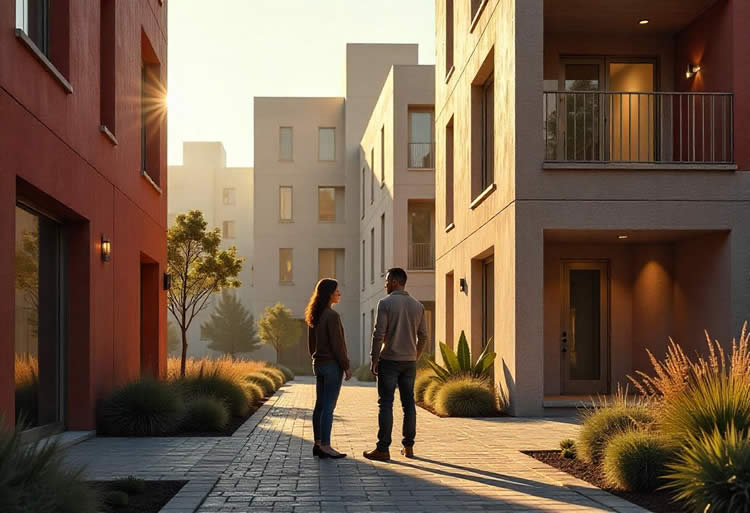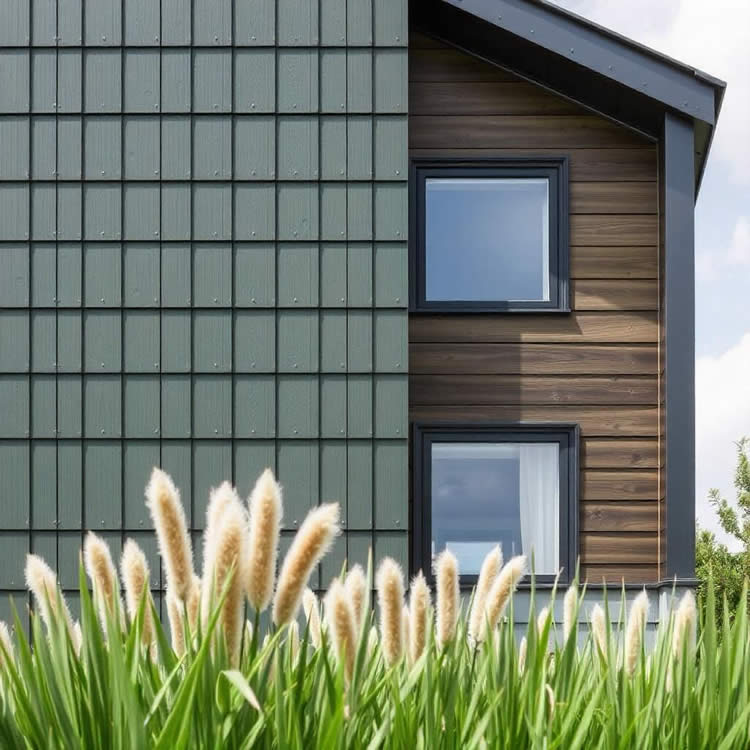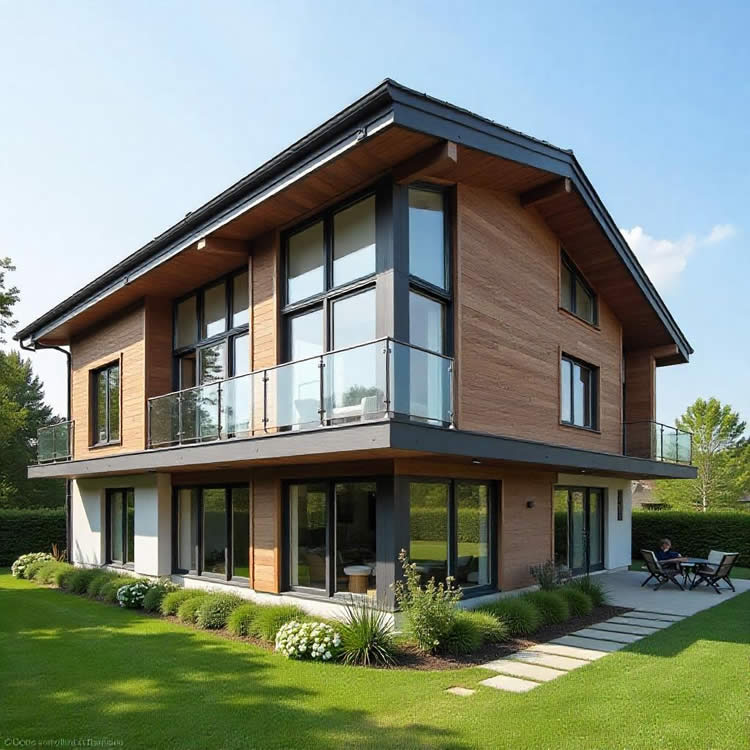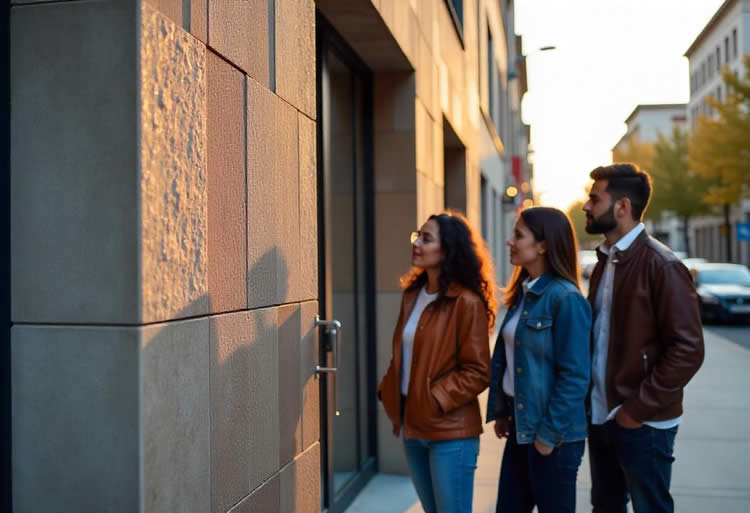Cladding plays a vital role in modern architecture, providing buildings with protection, insulation, and aesthetic appeal. However, as environmental concerns grow, the focus has shifted toward sustainable cladding solutions that minimize environmental impact while offering durability and efficiency.
This article explores the importance of sustainable cladding solutions, the materials and technologies leading the way, and how these innovations contribute to greener construction practices.

What are Sustainable Cladding Solutions?
Sustainable cladding solutions refer to eco-friendly materials and methods used to protect and enhance building exteriors while minimizing environmental impact. Unlike traditional cladding systems that often rely on non-renewable resources and energy-intensive processes, sustainable options prioritize renewable, recyclable, or low-impact materials that reduce carbon emissions and waste.
These solutions aim to balance functionality, aesthetics, and environmental responsibility. By integrating sustainable cladding solutions, architects and builders contribute to greener construction practices, promote energy efficiency, and ensure long-lasting performance. Whether through recycled metals, timber, or innovative composites, sustainable cladding is shaping the future of eco-conscious building design.
Key Features of Sustainable Cladding Solutions
- Eco-Friendly Materials:
Focus on renewable or recycled resources like timber, cork, or reclaimed brick. - Energy Efficiency:
Improves insulation, reducing energy consumption and costs. - Durability:
Designed for longevity to minimize replacement and maintenance. - Aesthetic Versatility:
Offers various textures, colors, and finishes to suit diverse architectural styles. - Low Environmental Impact:
Reduces carbon footprint during production and throughout its lifecycle.
Incorporating sustainable cladding solutions into construction projects is essential for building a more environmentally friendly and resilient future. They are not only a response to growing environmental concerns but also an opportunity to create innovative, sustainable, and visually striking architectural designs.
Why Innovative Cladding Solutions Matter
Sustainable cladding solutions are essential in addressing the environmental challenges of modern construction. Traditional cladding materials often rely on non-renewable resources and energy-intensive production processes, contributing to carbon emissions and waste. By adopting sustainable cladding solutions, architects, builders, and developers can reduce environmental footprints while meeting aesthetic and functional requirements.
Benefits of Sustainable Cladding
- Environmental Protection:
Minimizes the use of non-renewable resources and reduces waste. - Energy Efficiency:
Enhances building insulation, reducing energy consumption. - Durability:
Provides long-lasting performance, lowering maintenance and replacement costs. - Aesthetic Versatility:
Offers design flexibility with a wide range of eco-friendly materials.

5 Materials for Sustainable Cladding Solutions
The choice of materials is crucial in achieving sustainability goals. Here are some of the most innovative and eco-friendly materials used in sustainable cladding solutions:
1. Recycled Metals
Recycled aluminum and steel are popular for their durability and recyclability. Using recycled metals for cladding reduces the need for raw material extraction and minimizes waste.
- Advantages: Long lifespan, low maintenance, and high strength.
- Applications: Suitable for modern and industrial architectural designs.
2. Timber
Certified sustainable timber, such as FSC-certified wood, is a renewable resource that can be harvested responsibly. Timber cladding provides a natural, warm aesthetic and excellent insulation.
- Advantages: Biodegradable, renewable, and carbon-neutral when sourced responsibly.
- Applications: Ideal for residential and commercial buildings.
3. Composite Materials
Composite cladding combines natural fibers with recycled plastics or resins, offering durability and reduced environmental impact.
- Advantages: Weather-resistant, low-maintenance, and available in various finishes.
- Applications: Versatile for residential, commercial, and industrial projects.
4. Green Walls
Living walls or green facades use vegetation as a cladding material. They improve air quality, provide insulation, and create a visually appealing natural facade.
- Advantages: Promotes biodiversity, reduces urban heat islands, and improves air quality.
- Applications: Urban environments and sustainable building projects.
5. Clay and Terracotta
Clay and terracotta are timeless, sustainable materials that are both durable and aesthetically pleasing. They are made from abundant natural resources and require minimal processing.
- Advantages: Energy-efficient, recyclable, and fire-resistant.
- Applications: Traditional and modern architectural styles.
Additional 5 Materials for Sustainable Cladding Solutions
Here are five more eco-friendly materials that are gaining popularity in sustainable cladding solutions:
6. Cork
Cork is a renewable, biodegradable material harvested from cork oak trees without harming the tree. It offers excellent thermal and acoustic insulation, making it an ideal choice for sustainable cladding.
- Advantages: Lightweight, water-resistant, and natural insulating properties.
- Applications: Residential and commercial buildings with a focus on natural aesthetics.
7. Hempcrete Panels
Hempcrete, made from hemp fibers and lime, is a sustainable building material that provides durability and thermal efficiency. Hempcrete panels can be used as cladding for their eco-friendliness and aesthetic appeal.
- Advantages: Carbon-negative, breathable, and mold-resistant.
- Applications: Low-impact residential and commercial buildings.
8. Reclaimed Brick
Reclaimed bricks repurposed from old buildings offer a sustainable and rustic option for cladding. They reduce the demand for new bricks and add a vintage charm to structures.
- Advantages: Reduces waste, durable, and offers a unique aesthetic.
- Applications: Restorations, renovations, and eco-conscious new builds.
9. Glass Panels
Recycled glass panels are an innovative and sustainable cladding option. They provide a modern aesthetic and allow for creative use of light while being environmentally friendly.
- Advantages: Fully recyclable, durable, and offers sleek design possibilities.
- Applications: Contemporary architecture and energy-efficient buildings.
10. Bamboo
Bamboo is a fast-growing, renewable resource that is lightweight yet incredibly strong. When treated properly, bamboo can be an excellent sustainable cladding material.
- Advantages: Rapidly renewable, biodegradable, and visually striking.
- Applications: Eco-friendly residential projects and decorative cladding.
These materials demonstrate the versatility and innovation in sustainable cladding solutions, providing architects and builders with a wide range of options to meet their environmental and design goals.

Technologies Driving Innovative Clad Solutions
The advancement of technologies is revolutionizing sustainable cladding solutions, enabling more efficient, eco-friendly, and innovative construction practices. Smart cladding systems enhance energy efficiency by monitoring and optimizing building performance, while prefabricated panels reduce waste and accelerate installation.
Solar-powered cladding merges renewable energy generation with exterior protection, further reducing environmental impact. These cutting-edge technologies are driving the adoption of sustainable cladding solutions, making them indispensable for greener and smarter building designs.
Innovative technologies are transforming the way sustainable cladding solutions are designed, manufactured, and installed.
1. Smart Cladding
Smart cladding integrates sensors and advanced materials to monitor energy performance and environmental conditions. These systems help optimize insulation and reduce energy consumption.
2. Prefabrication
Prefabricated cladding panels reduce waste and construction time while improving precision. These panels often incorporate recycled or eco-friendly materials, enhancing sustainability.
3. Solar-Powered Cladding
Solar-integrated cladding uses photovoltaic panels to generate renewable energy for buildings. This dual-purpose solution combines sustainability with energy efficiency.
You may like:
Investing in Rental Properties: An Effective Method for Real Estate Success
Sustainable Cladding Solutions in Practice
Case Study 1: Timber Cladding in Modern Architecture
A residential project in Scandinavia showcases the use of FSC-certified timber cladding. The material provided excellent insulation, natural aesthetics, and low environmental impact, making it a prime example of sustainable cladding solutions.
Case Study 2: Green Walls in Urban Skyscrapers
A skyscraper in Singapore features a living wall that covers over 50% of its facade. This innovative cladding reduces the urban heat island effect, improves air quality, and enhances the building’s aesthetic appeal.
Case Study 3: Solar Cladding on Commercial Buildings
A tech company in California integrated solar cladding on its office facade. This sustainable solution generates renewable energy while maintaining a sleek and modern appearance.
Choosing the Right Sustainable Cladding Solutions
When selecting sustainable cladding for a project, consider the following factors:
- Material Origin:
Ensure materials are responsibly sourced and certified. - Durability:
Choose materials that require minimal maintenance and offer long-term performance. - Energy Efficiency:
Prioritize cladding that enhances insulation and reduces energy costs. - Aesthetics:
Opt for materials that align with the project’s design goals. - Lifecycle Impact:
Evaluate the environmental impact of materials from production to disposal.
Selecting the ideal sustainable cladding solutions involves balancing environmental impact, functionality, and design preferences. By prioritizing responsibly sourced materials, energy efficiency, and long-term durability, architects and developers can enhance a building’s performance while reducing its carbon footprint. Thoughtful choices in sustainable cladding solutions not only contribute to eco-friendly construction but also ensure aesthetic appeal and cost-effectiveness over time.
Challenges in Adopting Sustainable Clad
Despite their benefits, innovative cladding solutions face challenges, including:
- Cost:
Eco-friendly materials and technologies can have higher upfront costs. - Availability:
Limited access to some sustainable materials can hinder adoption. - Regulatory Barriers:
Building codes and regulations may not always support innovative solutions. - Awareness:
Educating stakeholders about the long-term benefits of sustainable cladding is essential.
Adopting sustainable cladding solutions comes with hurdles such as higher initial costs, limited material availability, regulatory complexities, and a lack of widespread awareness. While these challenges may deter immediate adoption, they also present opportunities for innovation, education, and policy reforms. Overcoming these barriers is essential for scaling the use of sustainable cladding solutions, paving the way for a greener and more sustainable construction industry.

The Future of Innovative Cladding Solutions
As the construction industry embraces sustainability, sustainable cladding solutions will play an increasingly vital role. Advancements in material science, renewable energy integration, and circular economy practices are set to redefine how buildings are designed and constructed.
- Emerging Trends: Biodegradable cladding, 3D-printed panels, and carbon-negative materials.
- Global Impact: Reduced carbon footprints, enhanced energy efficiency, and improved urban ecosystems.
The future of sustainable cladding solutions lies in continuous innovation, with advancements in biodegradable materials, carbon-negative technologies, and energy-integrated systems leading the way. As the construction industry prioritizes eco-conscious practices, these solutions will play a pivotal role in reducing carbon footprints, enhancing energy efficiency, and creating resilient, aesthetically pleasing structures. By embracing cutting-edge materials and methods, sustainable cladding solutions are set to revolutionize architecture, making it greener, smarter, and more adaptable to environmental challenges.
Final Thoughts
Sustainable cladding solutions are not just a trend—they are a necessity for the future of construction. By prioritizing eco-friendly materials and innovative technologies, the industry can achieve a balance between functionality, aesthetics, and environmental responsibility. Whether you’re an architect, builder, or developer, adopting sustainable cladding is a step toward creating greener, healthier, and more resilient built environments.
Recommended article:
The 10 Leading Cladding Companies that Shaping the Future of Architecture












